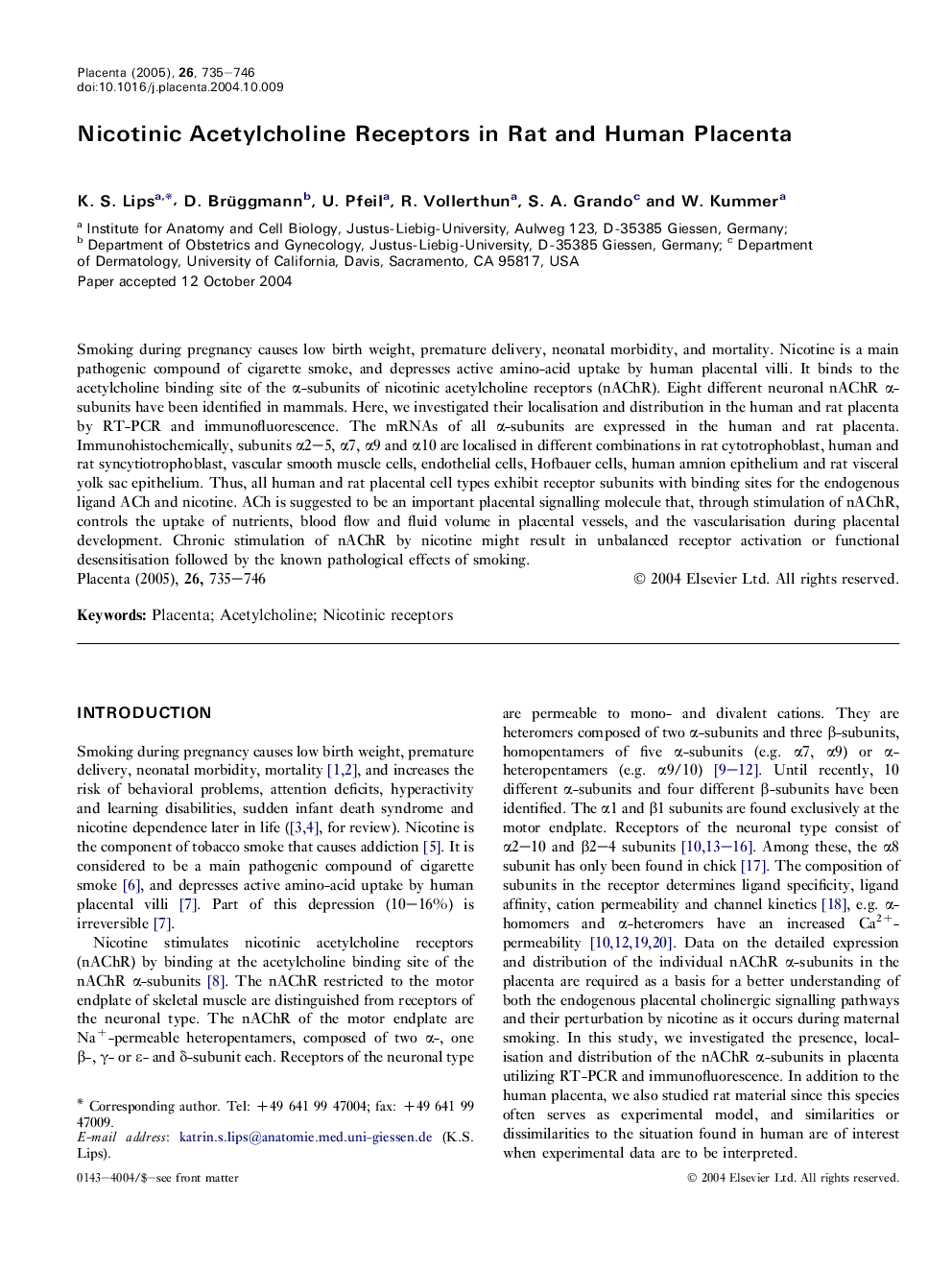| Article ID | Journal | Published Year | Pages | File Type |
|---|---|---|---|---|
| 9109121 | Placenta | 2005 | 12 Pages |
Abstract
Smoking during pregnancy causes low birth weight, premature delivery, neonatal morbidity, and mortality. Nicotine is a main pathogenic compound of cigarette smoke, and depresses active amino-acid uptake by human placental villi. It binds to the acetylcholine binding site of the α-subunits of nicotinic acetylcholine receptors (nAChR). Eight different neuronal nAChR α-subunits have been identified in mammals. Here, we investigated their localisation and distribution in the human and rat placenta by RT-PCR and immunofluorescence. The mRNAs of all α-subunits are expressed in the human and rat placenta. Immunohistochemically, subunits α2-5, α7, α9 and α10 are localised in different combinations in rat cytotrophoblast, human and rat syncytiotrophoblast, vascular smooth muscle cells, endothelial cells, Hofbauer cells, human amnion epithelium and rat visceral yolk sac epithelium. Thus, all human and rat placental cell types exhibit receptor subunits with binding sites for the endogenous ligand ACh and nicotine. ACh is suggested to be an important placental signalling molecule that, through stimulation of nAChR, controls the uptake of nutrients, blood flow and fluid volume in placental vessels, and the vascularisation during placental development. Chronic stimulation of nAChR by nicotine might result in unbalanced receptor activation or functional desensitisation followed by the known pathological effects of smoking.
Related Topics
Life Sciences
Biochemistry, Genetics and Molecular Biology
Developmental Biology
Authors
K.S. Lips, D. Brüggmann, U. Pfeil, R. Vollerthun, S.A. Grando, W. Kummer,
